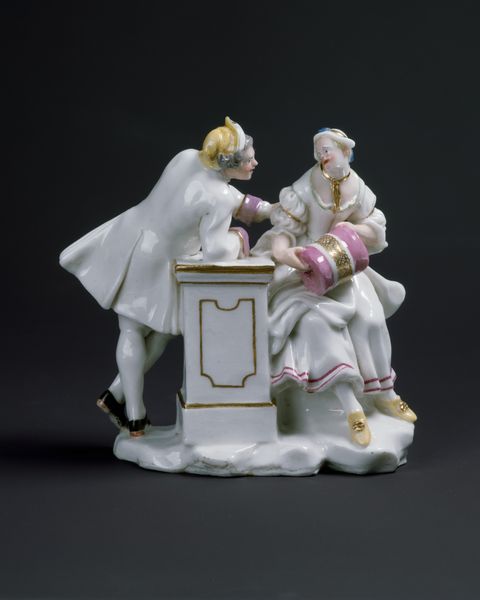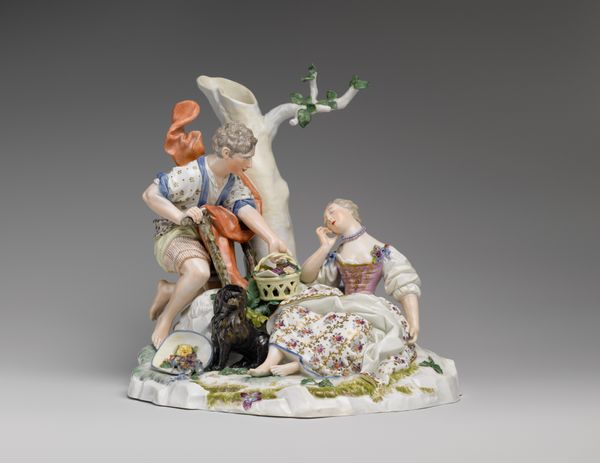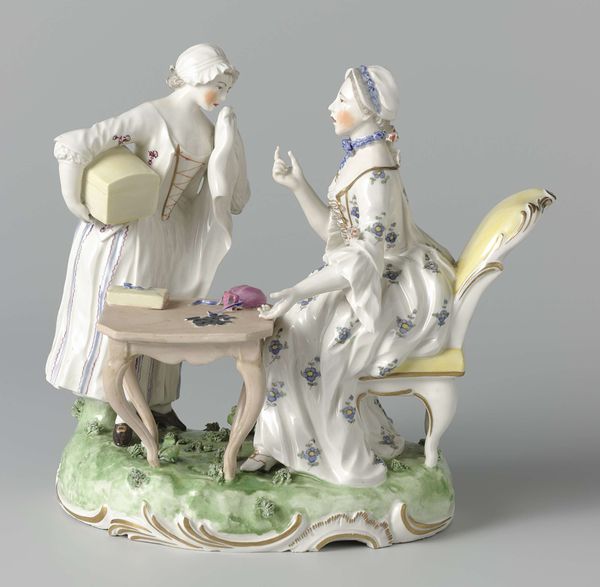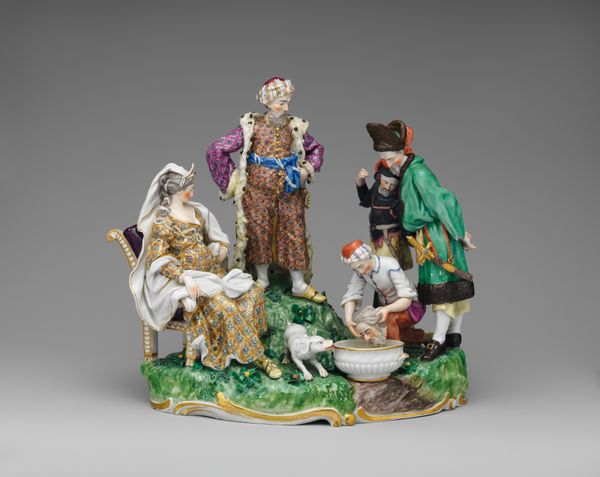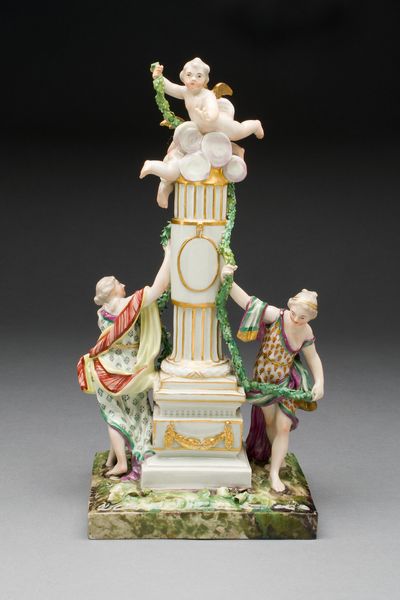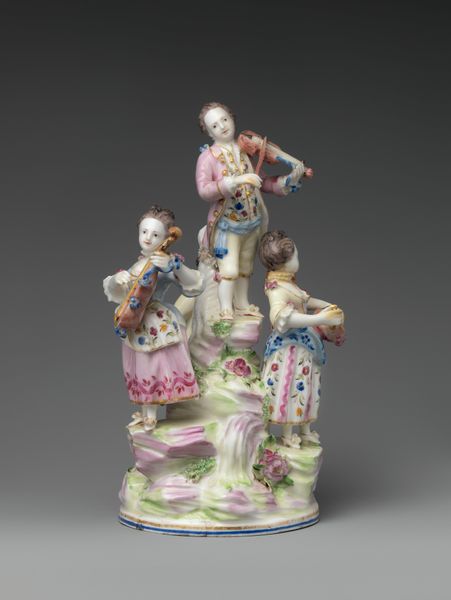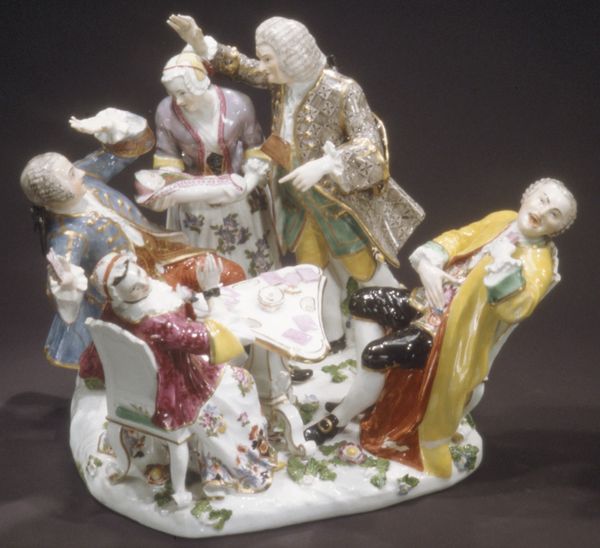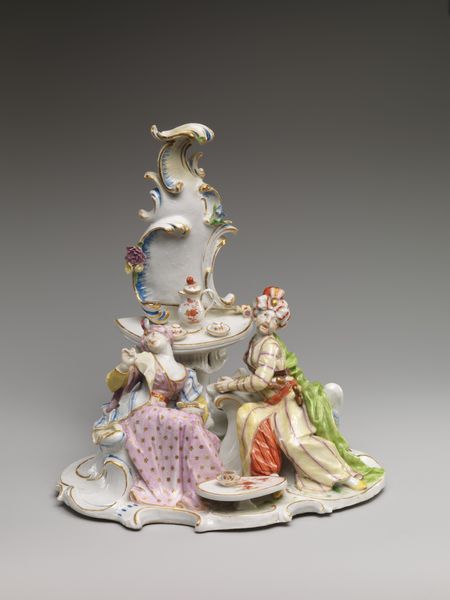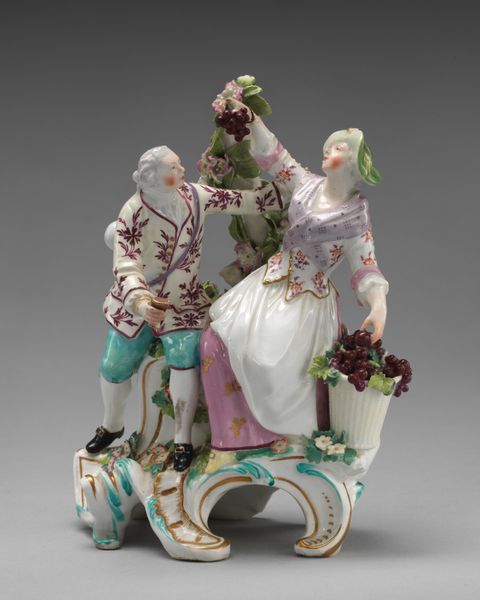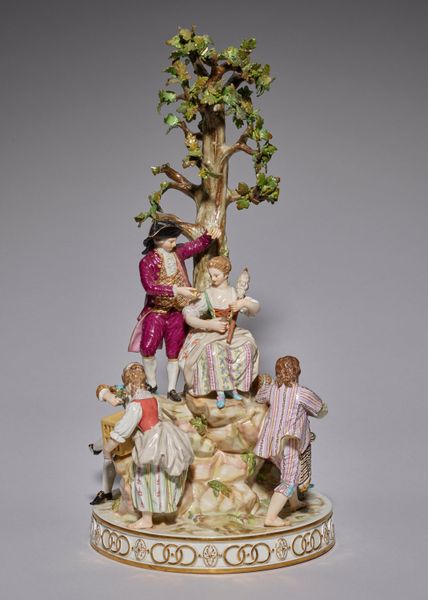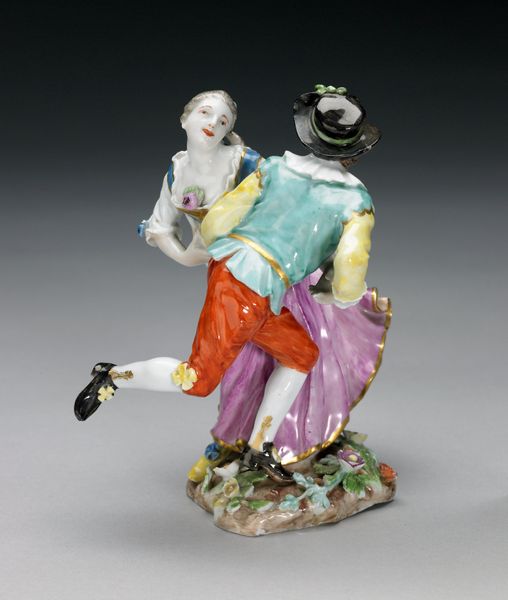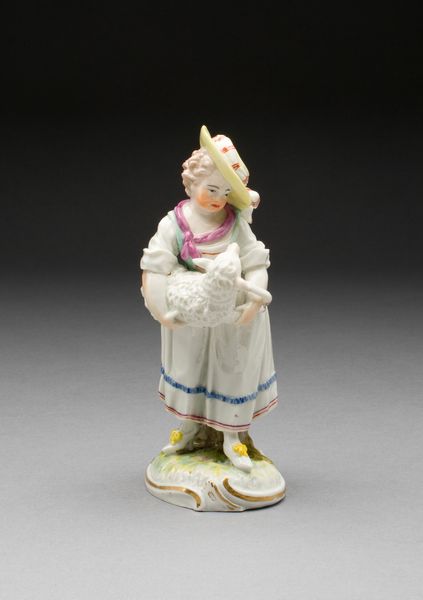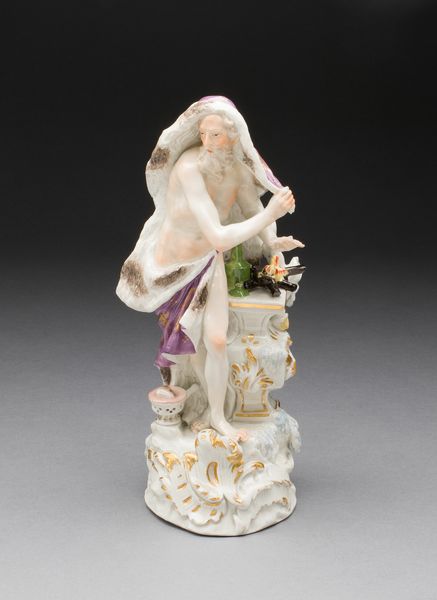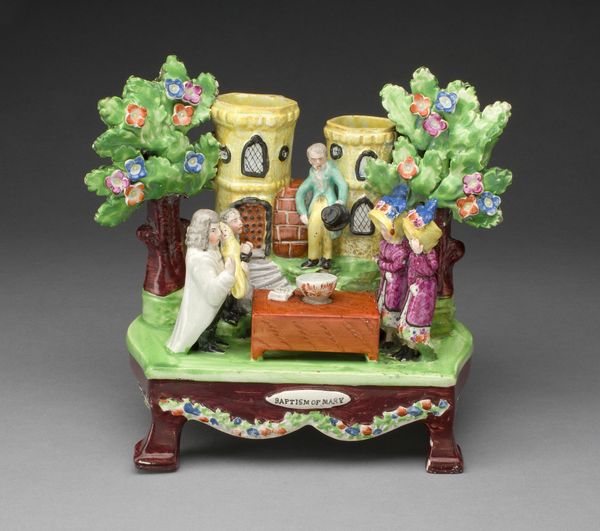
ceramic, porcelain, sculpture
#
ceramic
#
porcelain
#
figuration
#
sculpture
#
genre-painting
#
decorative-art
#
miniature
#
rococo
Dimensions: Overall (confirmed): 4 7/8 × 3 7/8 × 2 3/4 in. (12.4 × 9.8 × 7 cm)
Copyright: Public Domain
Curator: Welcome. Today, we’re looking at "The Coiffure," a porcelain sculpture created by the Ludwigsburg Porcelain Manufactory sometime between 1765 and 1775. It’s currently housed here at the Metropolitan Museum of Art. Editor: Immediately, I'm struck by the almost absurd height of that hairstyle. It’s theatrical, bordering on comical. Curator: Precisely! The Rococo period reveled in ornamentation and extravagance. If we deconstruct the elements, we notice the careful staging. A central female figure seated for her toilette is encircled by attendants on various levels and positions; their forms, colors, textures, are deliberately designed to elicit drama. Editor: I see that. But what does the work tell us about the gender politics of the time? These elaborate hairstyles weren't merely decorative; they were a social performance, constructed through immense labor by female servants. A potent visual metaphor for female oppression even as it denotes an elevated status through its ornamentation. Curator: A critical observation. It demonstrates the inherent contradictions within the rococo aesthetic itself: a superficial beauty built upon socio-economic disparity. Notice, also, the textural qualities of the porcelain, that delicate, almost translucent finish is as much a comment on societal refinement as it is a comment on women's physical ideal: flawless, untainted. Editor: And the man atop the ladder! He actively shapes this image—exercising control over female adornment while situated at a level higher than the female subject of coiffure, further evidencing how power is coded into space and the image in general. His position mirrors, quite literally, his rank in the socio-economic power structure. Curator: Precisely. And yet, he’s not presented as a dominating figure but rather as a service provider; the whole scene almost parodies the very conventions of elite life, turning them into something approaching caricature. A kind of pastiche... Editor: Perhaps. By unpacking the symbolism, we confront difficult aspects of this epoch—the fetishization of femininity and labor, all performed within a restrictive social order. Even at this miniature scale the piece embodies significant tensions, both aesthetic and sociological. Curator: A fitting microcosm. Now, as we depart, perhaps we can consider not merely the technical and aesthetic achievement of the work, but what these forms reveal about our continued engagement with constructions of beauty, gender, and class even today. Editor: It’s fascinating to me how such an artifact speaks to the commodification of appearance across multiple temporalities—the past echoes so acutely in our contemporary obsession with identity-making via the body. Thank you for helping unpack that.
Comments
No comments
Be the first to comment and join the conversation on the ultimate creative platform.
